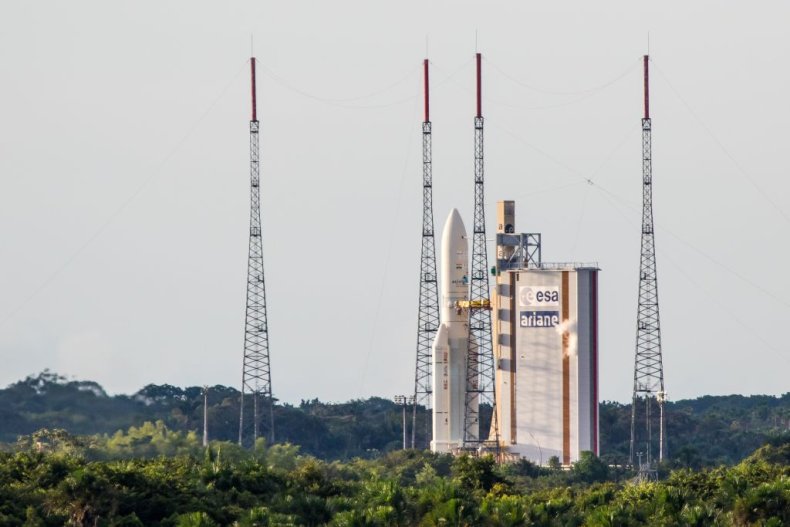The James Webb Space Telescope (JWST) is due to launch later this week, marking the start of the much-anticipated mission described as the successor to the Hubble telescope.
JWST is set to launch at 7:20 a.m. ET on Saturday, December 25, on an Ariane 5 rocket provided by the European Space Agency (ESA).
The rocket is due to launch from the ESA's spaceport in Kourou, French Guiana, which is located on the northeastern coast of South America.
Ariane 5 is a 50-meter (164 feet), 780-ton vehicle capable of carrying payloads weighing more than 10 metric tons to geostationary transfer orbit (GTO) and over 20 metric tons into low-Earth orbit (LEO).
It's launched six or seven times per year, and in the past has launched NASA's Herschel and Plank missions among others.
NASA is due to host coverage of the launch, as well as pre- and post-launch activities, on its NASA TV livestream channel which can be watched on the space agency's website as well as on YouTube and on social media.
The Christmas Day launch date marks yet another delay. Earlier this week the telescope was set to launch on Christmas Eve, December 24, but expected bad weather pushed the date back.
December 24 was itself a delay from the telescope's previous expected launch date of December 22, and that occurred due to a "communication issue between the observatory and the launch vehicle system," NASA said in a statement.
And December 22 was yet another delay from December 18, which was caused by a "sudden, unplanned release of a clamp band—which secures Webb to the launch vehicle adapter—caused a vibration throughout the observatory," NASA said.
JWST is decades in the making. Plans for the telescope first started coming together in the '90s.
In any case, the telescope is now tantalizingly close to launch. Described as a successor to the Hubble Space Telescope, JWST is going to be able to peer further into space—and thus further back in time—than its predecessor.
Scientists hope it will provide insight into mysterious cosmic phenomena like black holes and dark matter, and even aid in the search for life on other planets.
NASA experts have told Newsweek that rather than replacing Hubble, JWST is due to work alongside it. The two telescopes look at different wavelengths of light, so JWST can see things that Hubble can't and vice-versa.
Specifically, JWST is an infrared telescope, meaning it can see light that is more shifted to the red side of the light spectrum—useful for spotting distant, dim objects.
According to the U.S. Government Accountability Office in May this year, the cost of JWST had nearly doubled to $9.7 billion since 2009.


Post a Comment